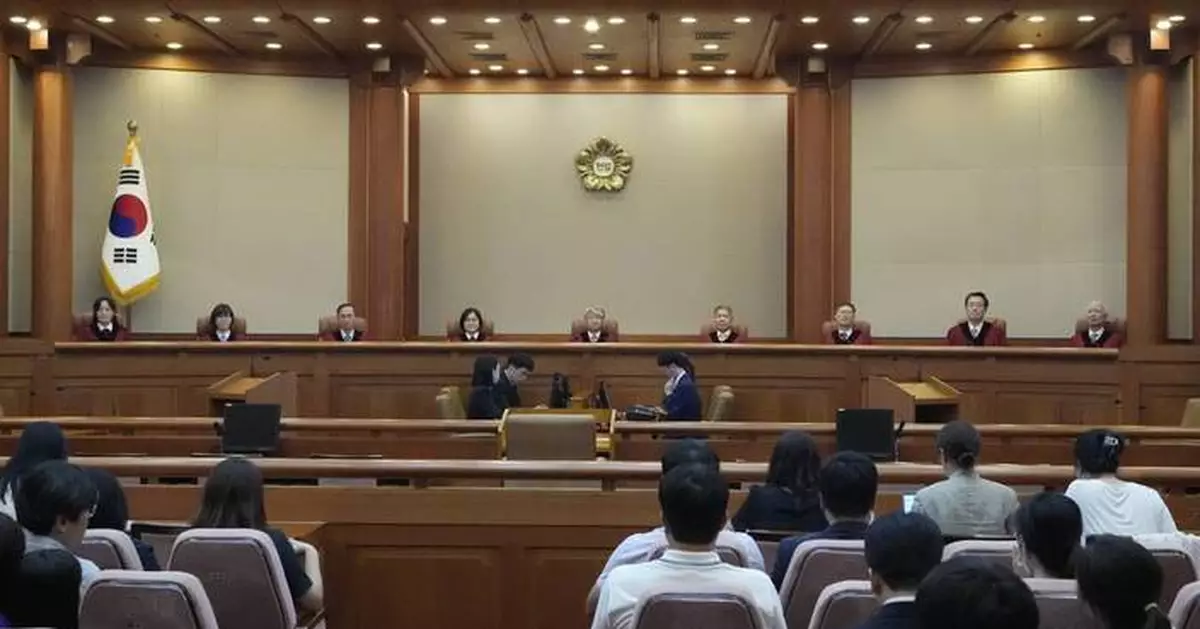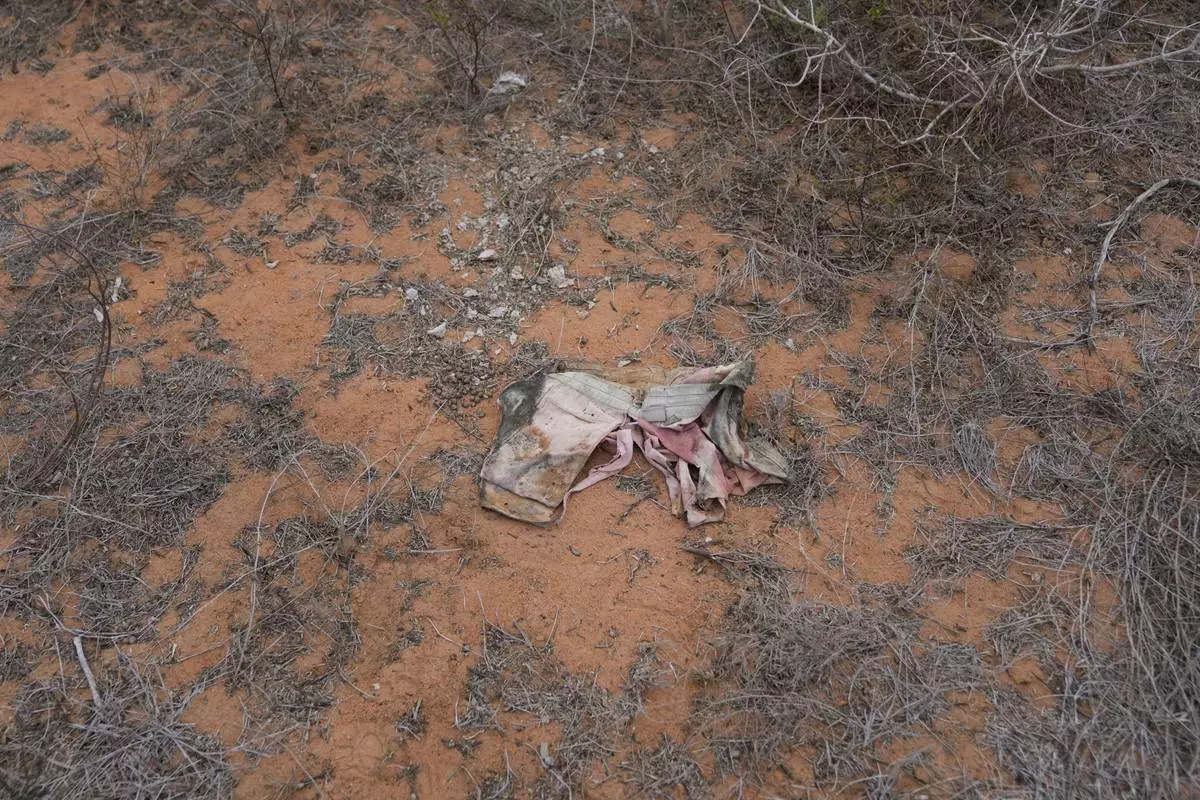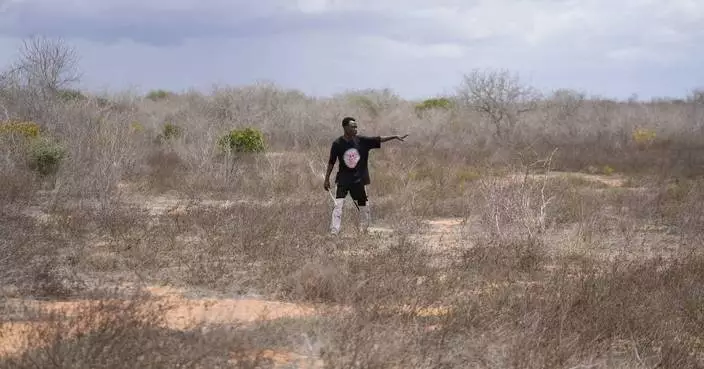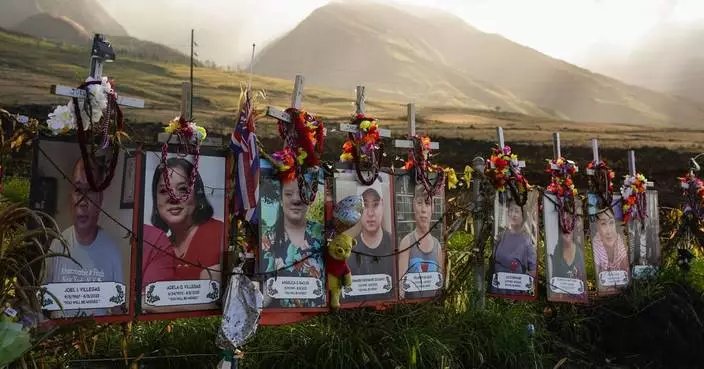SEOUL, South Korea (AP) — South Korea’s Constitutional Court on Thursday ordered the government to back its climate goals with more concrete plans for action through 2049, handing a partial victory to climate campaigners who say the country’s failure to cut emissions faster amounts to a violation of their rights.
The court, which weighs the constitutionality of laws, mandated the rewriting of the country's climate law while ruling on four climate cases raised by 255 plaintiffs, including many young people who were children or teenagers when they began filing the complaints against the government and lawmakers in 2020.
“Today’s ruling confirms that climate change is an issue related to our fundamental rights and everyone has a right to be safe from climate change,” Sejong Youn, one of the lawyers representing the plaintiffs, said in a news conference outside the court.
“The ball is now with the government and the National Assembly,” he said, referring to South Korea’s parliament.
The campaigners argued that South Korea’s current goal of cutting carbon emissions by 35% from 2018 levels by 2030 is inadequate to manage the impact of climate change, and that such objectives weren’t backed by sufficient implementation plans.
They also pointed out that the country has yet to establish plans to reduce carbon emissions after 2031, despite its goals of achieving carbon neutrality by 2050. The plaintiffs allege that South Korea’s lax climate policies violate their human rights by leaving them vulnerable to future deteriorations in the environment and climate-related harm.
The court did not require South Korea’s government to set up a more ambitious 2030 target under its carbon neutrality act and also rejected the plaintiffs’ calls for more specific plans to ensure implementation, saying that they failed to demonstrate that the policy was unconstitutional.
However, the court did uphold the plaintiffs’ argument that the country needed to establish plans for cutting emissions from 2031 to 2049 and ordered the government to modify the carbon neutrality law by Feb. 28, 2026, to include such plans.
Lee Eun-ae, one of the court’s nine justices, said the lack of concrete plans to reduce emissions after 2031 is unconstitutional because it fails to sufficiently protect basic rights, infringes on the environmental rights of plaintiffs and “transfers an excessive burden” to future generations.
The South Korean Ministry of Environment said in a statement that it respects the court’s decision and plans to “faithfully implement follow-up measures.”
Activists and lawyers representing the plaintiffs welcomed the court’s decision, expressing hope that it could inspire similar action in Asia and other parts of the world. They urged the government and legislators to strengthen the country’s 2030 target as well as set up plans from 2031 to 2049.
Han Je-ah, one of the youngest plaintiffs at 12, said the ruling felt “joyful and satisfying like a wish coming true.”
“The climate crisis is not a future problem, but a reality that everyone is experiencing now,” she said. “I hope this ruling will bring bigger changes so that children like me don’t have to file constitutional complaints in the future."
The government of South Korean President Yoon Suk Yeol, who took office in 2022, has focused much of its energy policy on promoting nuclear-generated electricity. Environmentalists have criticized South Korea over what they see as a weak commitment to reduce dependence on coal and other fossil fuel and promote renewable energy sources. South Korea currently gets about 9% of its electricity from renewable sources, significantly lower than the 34% average among rich nations making up the Organization for Economic Cooperation and Development.
The Korea Federation for Environmental Movements, an activist group, criticized the court for not forcing the country to strengthen its climate target. In a statement, the group said the government shouldn’t get a “free pass” on its “passive greenhouse gas reduction targets that are increasing critical environmental risks and future uncertainties.”
But Mie Asaoka, a lawyer who is supporting a similar climate campaign in Japan, called the South Korean ruling a “significant judicial decision in Asia” and expressed hope that it would serve as a “catalyst for change” in Japan.
She said Japanese plaintiffs have recently filed a climate lawsuit against 10 thermal power companies while calling for the country to commit to stronger plans to cut carbon emissions for 2030 and 2035.
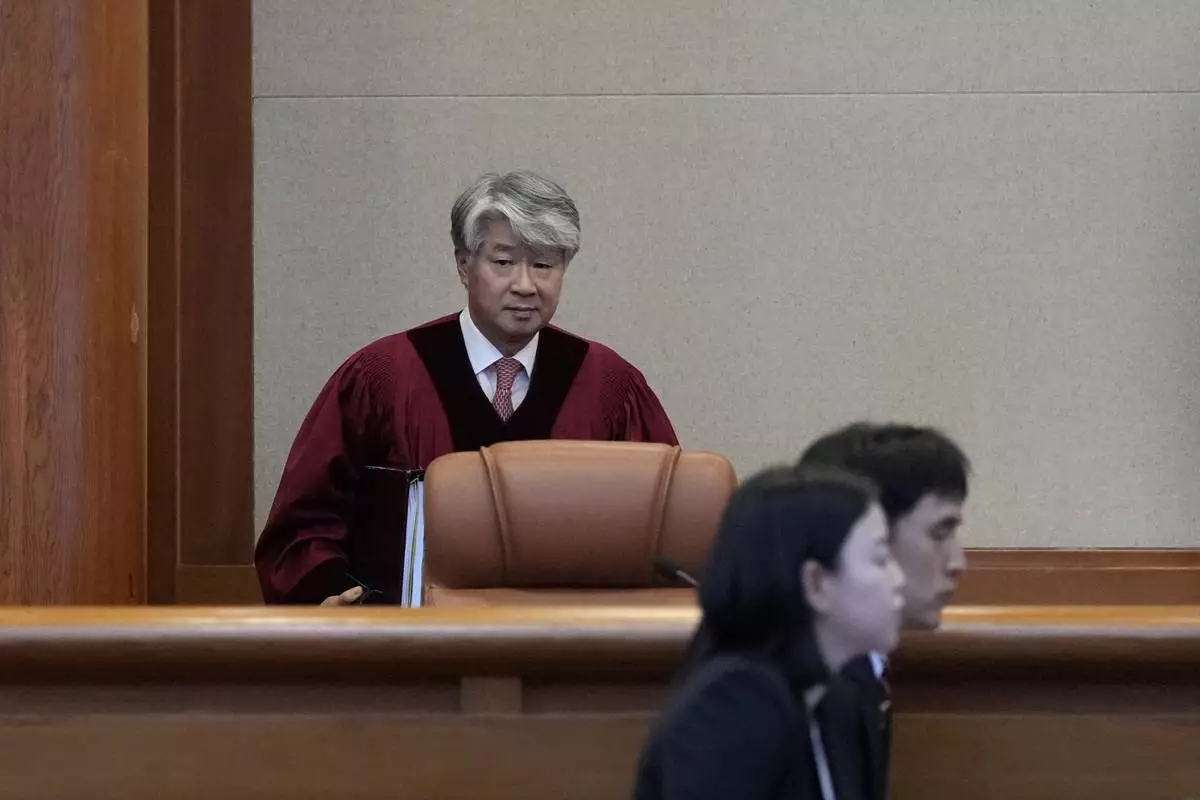
South Korea's Constitutional Court Chief Justice Lee Jong-seok arrives at the Constitutional Court in Seoul, South Korea, Thursday, Aug. 29, 2024. (AP Photo/Lee Jin-man)
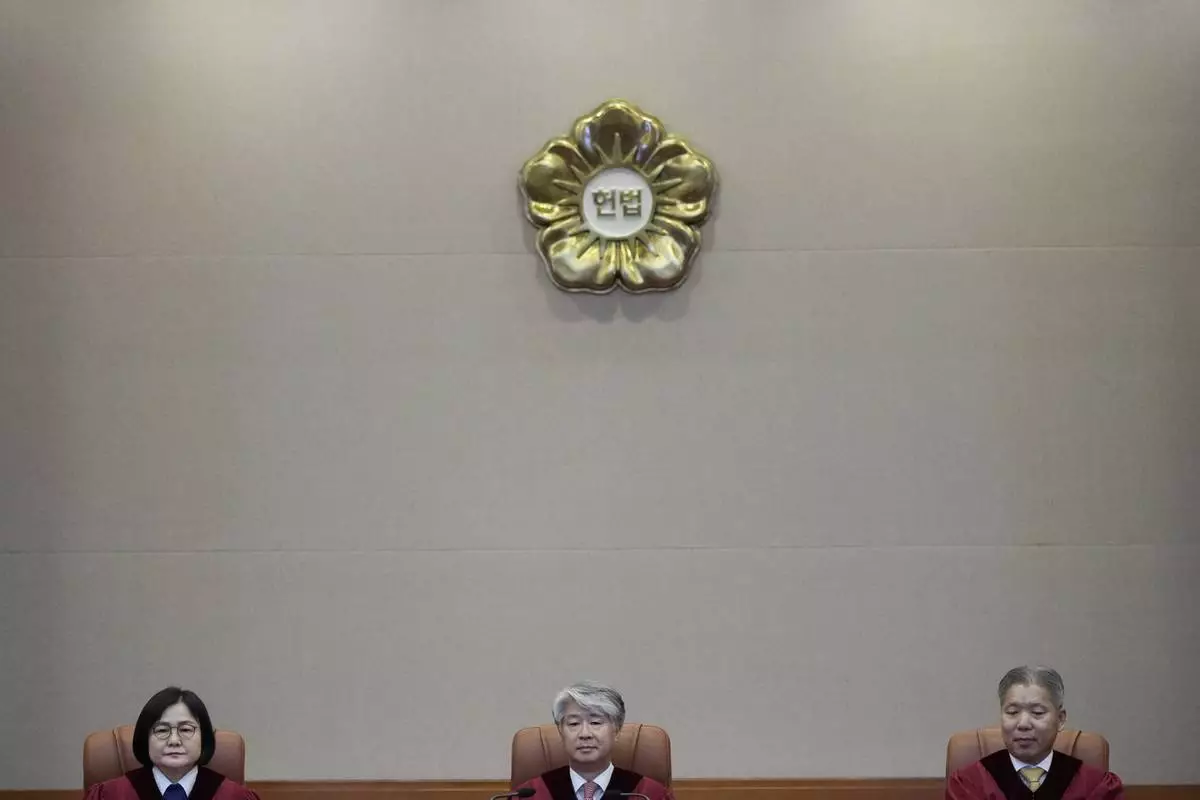
South Korea's Constitutional Court Chief Justice Lee Jong-seok, center, and other judges sit upon their arrival at the Constitutional Court in Seoul, South Korea, Thursday, Aug. 29, 2024. (AP Photo/Lee Jin-man)

South Korea's Constitutional Court Chief Justice Lee Jong-seok, center, and other judges sit upon their arrival at the Constitutional Court in Seoul, South Korea, Thursday, Aug. 29, 2024. (AP Photo/Lee Jin-man)


